An introduction to bow hunting Common Bow Types - Parts of Bows and Arrows - Bows Accessories
One of the first and most important considerations of the interested archer or bowhunter is the proper selection of a bow. Proper fit of the bow, along with correct arrow selection is essential to the accuracy and performance of your equipment. When purchasing a bow, seek the advise of an experienced archer or a knowledgeable sales person. Consult your state regulations prior to purchasing bowhunting equipment to determine the legal requirements.
The basics of a bow require that you pull or "draw" the string back to some point which we call "full draw." As you draw the bow, the effort you put into this is stored in the limbs of the bow and is referred to in terms of weight. When you release the string, this stored energy is transferred back to the string and into the arrow, moving it forward.
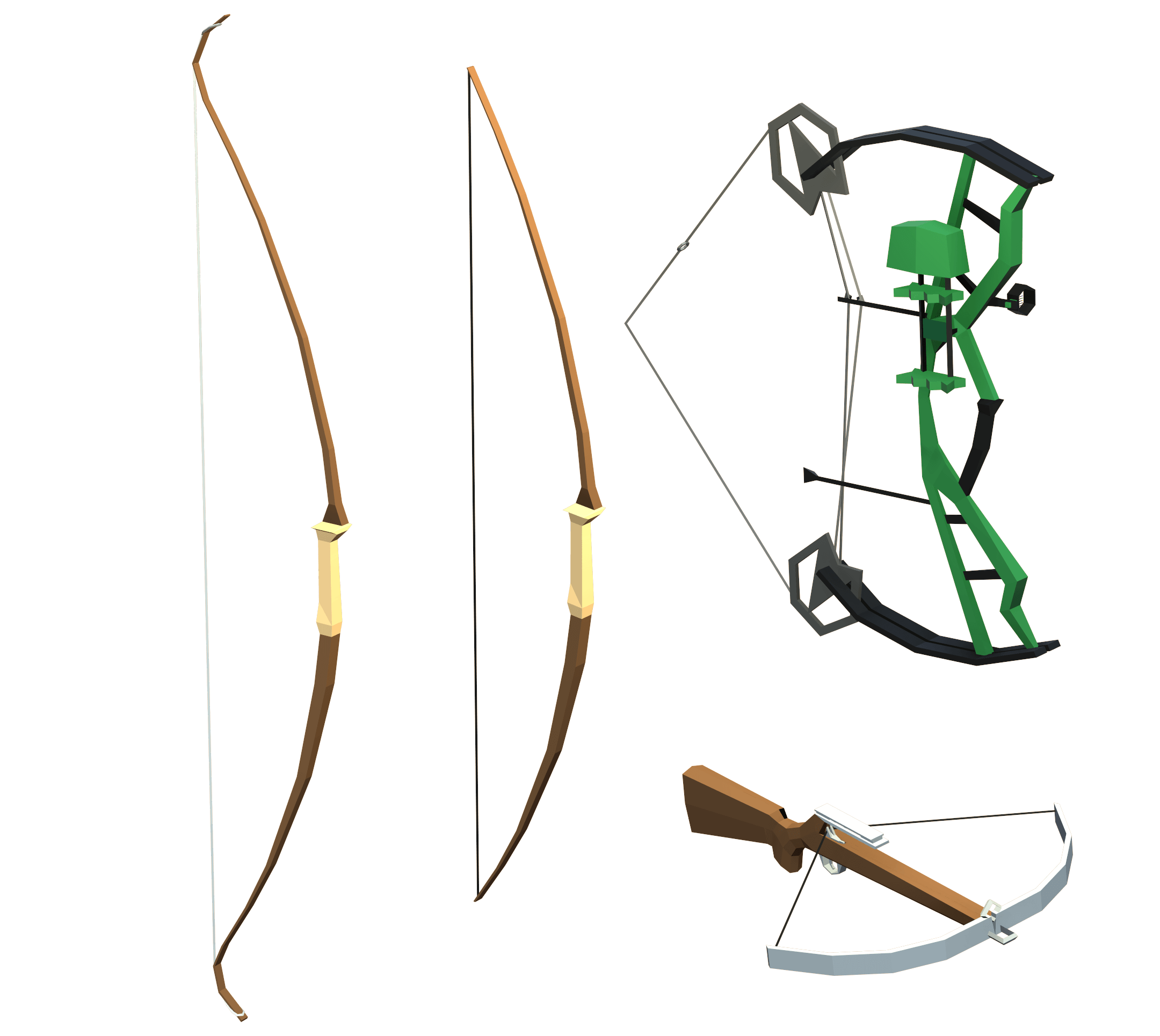
What are the three common bow types?
1. Longbow (Stick Bow)

The "traditional" bow or longbow is very straight with no curve in the limbs until the string is attached. It is used by those interested in traditional shooting with little additional equipment. Draw weight increases with the distance the string is pulled. You will be holding the most weight at full draw.
2. Recurve Bow
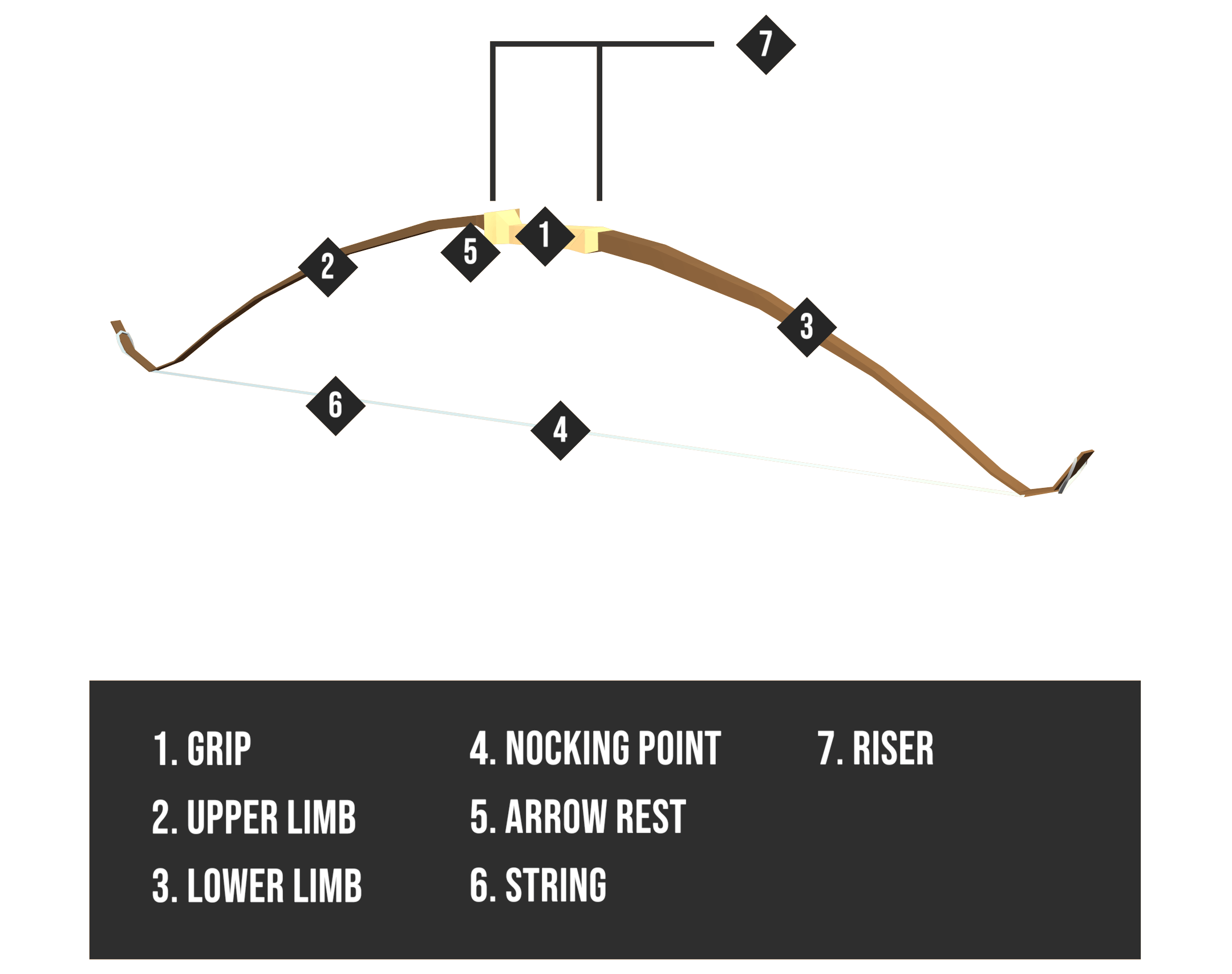
A recurve is a type of long bow that has both of its ends curved away from the shooter. Recurved limbs can provide more power in a shorter bow than the long bow. Recurves are smooth and quiet shooting bows making them a popular choice. As with the long bow, draw weight increases with the distance the string is pulled.
3. Compound Bow

The compound bow, using a system of cables and pulleys, is the most popular bow for both hunting and target shooting. The greatest advantage of the compound bow is its "draw weight let-off." As you draw the compound bow, you reach the "peak" weight before you come to the full draw. When holding at full draw, the weight you are actually holding is reduced by 50 to 90 percent on modern bows. For example, a 60 pound bow with a 50 percent "let-off" only requires you to hold 30 pounds of draw weight at full draw. This "let-off" feature of the compound bow is favored by bowhunters because it reduces muscle fatigue while the drawn bow is being aimed at game.
Bow sight
The bow sight consists of one or more moveable pins attached to the bow. The pins correspond to various shooting distances. Many new sights have cross hairs, colored lines and a number of other designs.

Four main parts of an arrow
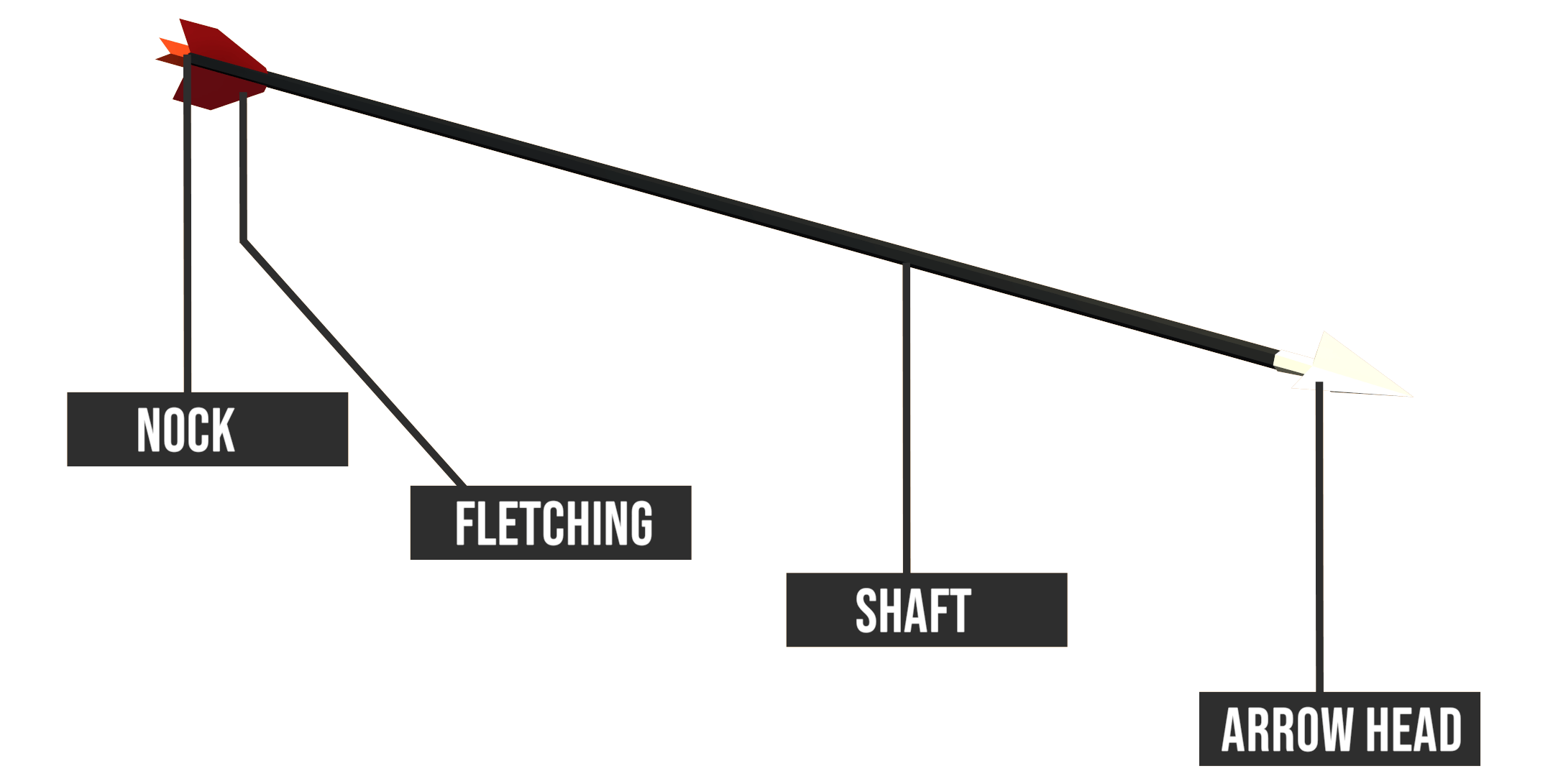
Shaft
The arrow, regardless of shaft material, must have the correct spine (stiffness) to match the bow. As an arrow is released the shaft bends before straightening in flight. Incorrect spine will cause erratic and inaccurate arrow flight. Draw length, bow weight and design, method of release, and the type of arrow head being used are all factors to consider when choosing the correct arrow for an individual.
Modern arrow shafts are made of four basic materials:
Wood shaft
- least expensive
- has a tendency to warp or splinter with age
- most popular with traditional archers
- used with long bows and recurves only
-
may shatter if shot from a compound bow
Fiberglass shaft
- most durable but relatively heavy
- primarily used for bow fishing
Aluminum shaft
- very durable
- light in weight
- popular with bow hunters and target archers
Carbon-graphite shaft
- durable
- very light
- relatively expensive
Fletching
The plastic vanes or feathers on an arrow are referred to as fletching. Fletching creates wind drag providing stability and accuracy in flight.
Fletching will also cause the arrow to spin similar to a rifle bullet, which also improves accuracy. The most popular fletching is comprised of three or more feathers. One of the feathers will be a different color and is called the "cock" feather. The remaining feathers are referred to as the hen feathers. The type of arrow rest being used determines the angle between the bowstring and cock feather. Some archers prefer four fletches in which case there is no cock feather.

Arrowhead
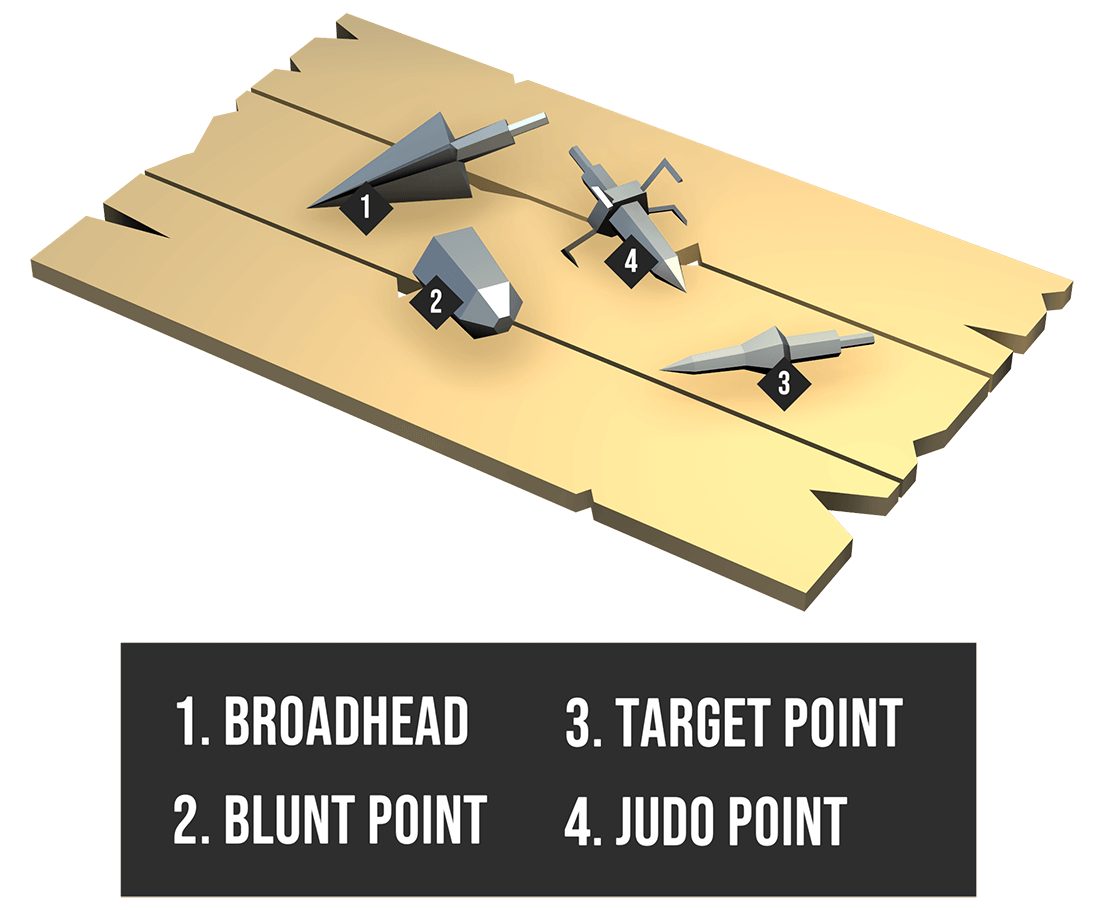
The most common types of arrowheads are:
Broadhead
- Used primarily for big game hunting
- The number of steel blades it contains may vary
- Arrowheads vary according to the type of shooting
Blunt Point
- Used for small game hunting or some types of target shooting
- Made of steel, hard rubber or plastic
Target Point
- Steel points used for target shooting and small game hunting
- Usually either a field point or bullet point
Judo Point
- Points design with spring arms attached to catch in grass and leaves preventing arrow loss
- Used for "stump" shooting and small game hunting
Nock
The nock is a slotted plastic tip located on the rear end of the arrow. The nock serves as a guide for fitting the arrow on the bowstring. There is a certain point on the bowstring where arrows are nocked. This point of the bowstring is called the "nocking point." We use a bow square to determine the point where an arrow on the rest would make a 90 degree angle with the bowstring. The nocking point would then be installed about 1/8 inch above the point. Fine tuning of this location is usually required.
Most common bow accessories
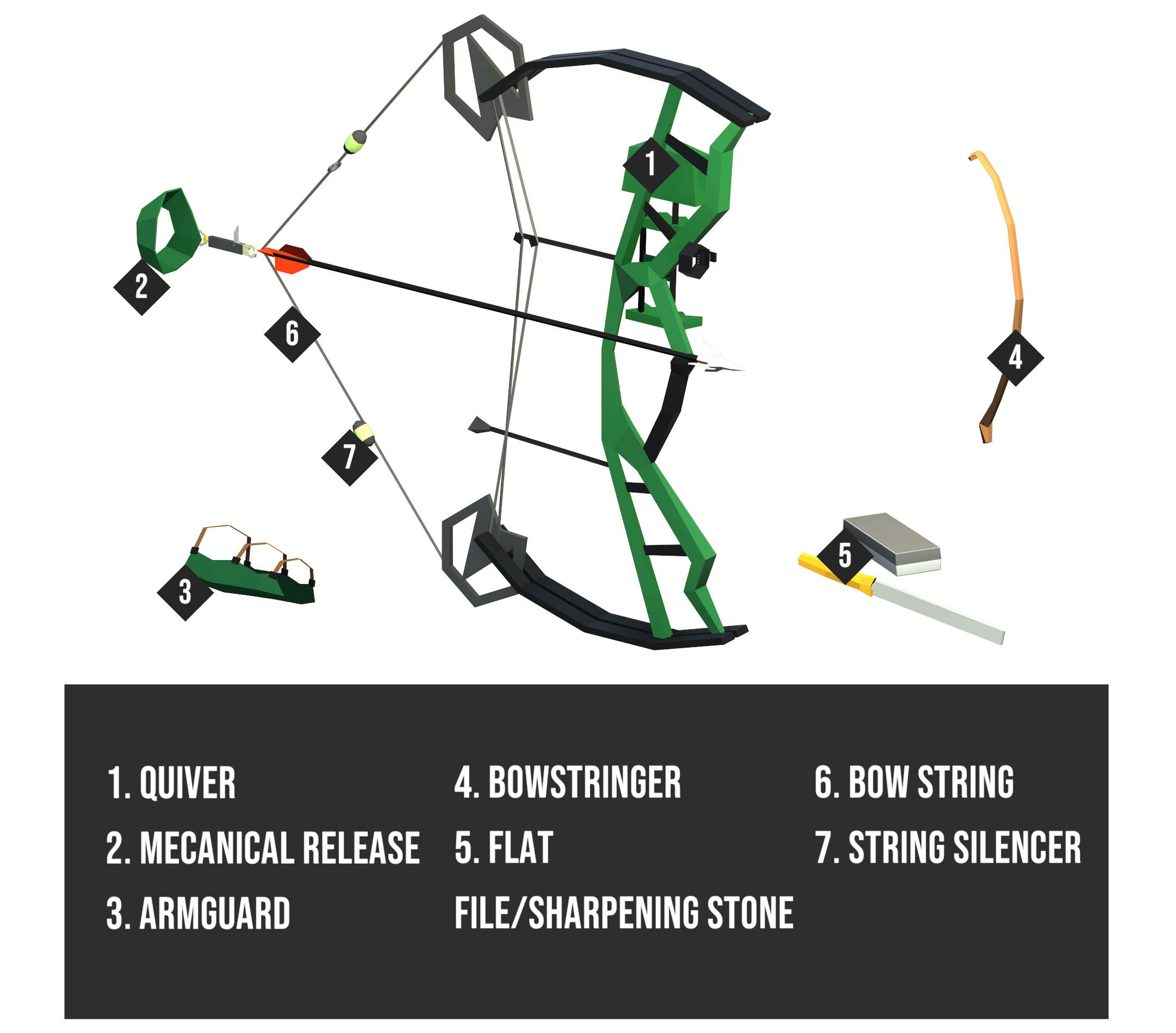
Quiver
- Usually a leather or synthetic container used for carrying or storing arrows
- Three common types of quivers are the back, side and bow quiver
- The most important function of the quiver is to protect the archer from the arrowheads
Glove, fingertab or mechanical release
- Gloves and finger tabs protect the fingers used in drawing and releasing the bowstring
- Mechanical releases attach to the string for drawing and releasing the arrow
- Help to make release smoother, improving accuracy
Armguard
- Protects the forearm from being slapped by the bowstring upon release of an arrow
- Keeps sleeves away from the bowstring
Bowstringer
- Prevents bow damage when stringing and unstringing long bows and recurve bows
- Allows easy replacement of bowstring
- When not in use, long bows and recurves should be stored unstrung at room temperature
- Do not attempt to string a recurve or longbow without a bowstringer
Flat File, Sharpening stones
- Used to sharpen broadheads
Bowstring
- It's a good idea to carry a spare bowstring in case of breaks
String silencers
- Usually yarn or rubber fingers attached to the string to reduce the noise on release